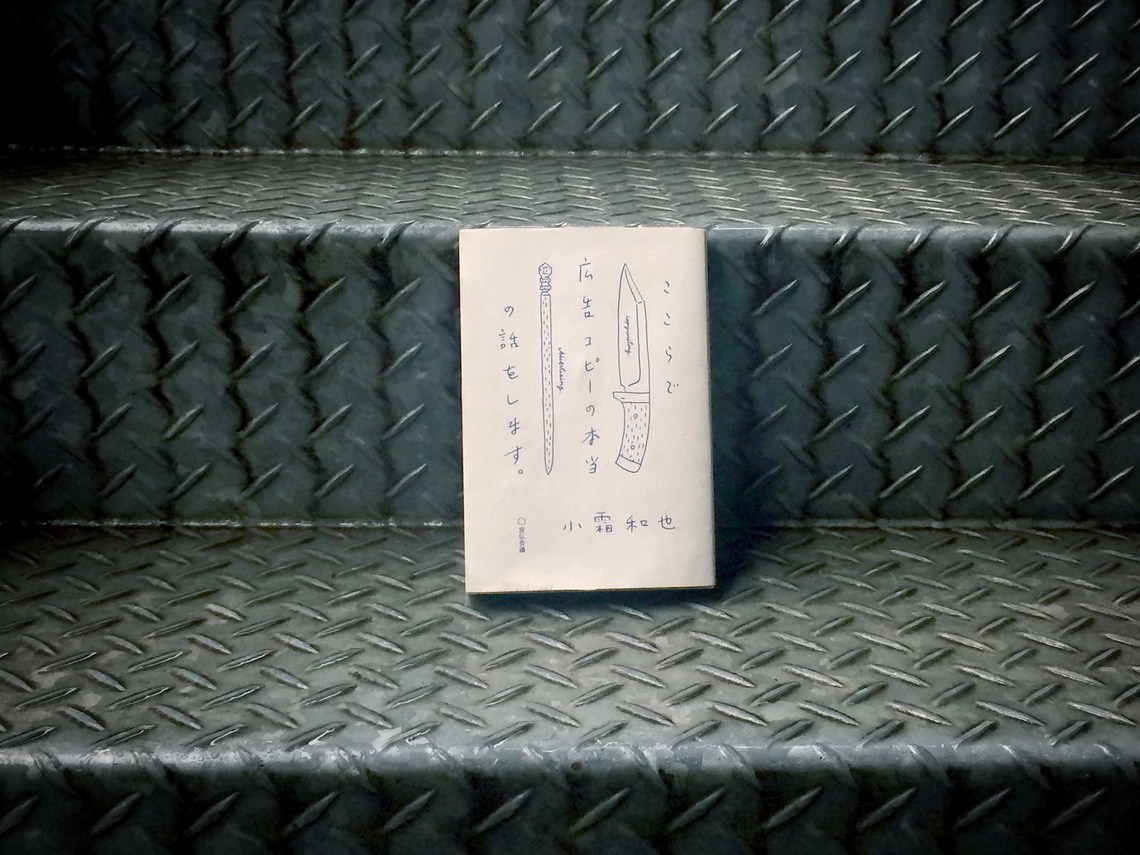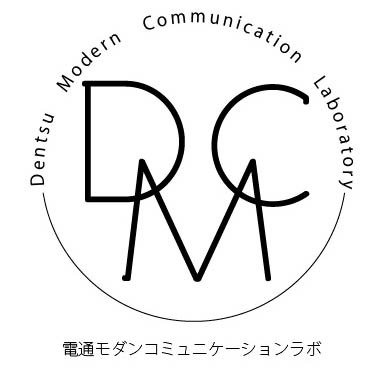Note: This website was automatically translated, so some terms or nuances may not be completely accurate.
The Textbook for Charging 1 Million Yen Per Copy: "Let's Talk About the Truth of Advertising Copy Here."
This time, we're featuring "Let's Talk About the Truth of Advertising Copy" by Kazuya Kosho, representative of Kosho Office and no problem LLC, copywriter/creative director/creative consultant.

Is everything we've been told about advertising copy a lie?
Does "telling the real story" mean everything we've heard about advertising copy so far is a lie?
Actually, several years ago, I had the privilege of attending the "no problem Free Advertising School" for a full year. This program, run by the author, Mr. Kosho, alongside Hiroshi Yonemura at no problem LLC., was part of their CSR activities. Every week, I not only received free lectures but was even treated to free meals—a truly fortunate experience. (※)
※ For details on the Free Advertising School, please refer to the "school" section at http://noproblem.co.jp . Past lecture notes are also available for download. Although Mr. Yonemura has since left no problem LLC., the two will continue the "Free Advertising School" together. I highly recommend aspiring young professionals in the advertising industry to apply. Recruitment is scheduled around April each year.
According to the "no problem Free Advertising School" description on no problem LLC's site, the foundation of practical advertising creative theory and techniques is
■ The ability to construct fundamental advertising communication strategies
■ Creative leaping ability: How far you can leap from that logic
The book also targets "young copywriters or aspiring copywriters" as its main audience, sharing the same goal of equipping them with these skills.
This book also targets "young copywriters or aspiring copywriters" as its main audience, sharing the same goal of "equipping readers with practical advertising creative theory and techniques." (It also delves deeply into the essence of things, making it a useful read for anyone navigating social interactions in the workplace, regardless of their connection to the advertising industry.)
Even before applying to the "No Problem Free Advertising School," I was a devoted follower of Mr. Kosho, eagerly awaiting updates to the advertising and copywriting texts he posted on his personal website (now unavailable due to a site redesign). My fascination began when, shortly after joining my company, I was stunned by a comment he had written for the grand prize of a certain advertising award, where he was also a judge.
The Grand Prize winner was an ad campaign I, as a consumer, had always found "really interesting." Yet, while other judges were lavishing praise, Mr. Kosho delivered a brutally honest comment along the lines of, "But this campaign didn't sell the product, right? So isn't it a failure?" (His actual comment was even sharper, a one-punch knockout statement). As an award acceptance comment, it completely ignored the room. It created friction. It made me nervous. But it was overwhelmingly correct. Since then, I've unofficially made him my personal mentor.
Later, I read the texts he wrote on his website and eventually sought his direct guidance (whether I truly absorbed them is another matter). His stance—always striving to speak the truth, the essential, and the practical—has remained consistently unchanged. Naturally, this book also contains "The Real Story of Advertising Copy = Practical, Essential Insights on Advertising Copy."
The section where the essence of this book is most concentrated, clearly unraveling common misconceptions about advertising copy, is "Evaluating Advertising Copy from Two Perspectives" (pp. 53-55).
Namely, evaluating advertising copy means:
■ Does the copy create or improve the relationship between the product and the person?
■ Does it possess the power of words to fulfill that role, striking or stirring the target audience's heart?
It must be evaluated from these two perspectives. (Achieving both is possible through a combination of taglines—copy focused on "definition"—and catchphrases that "grab" the target audience's attention).
This also aligns with the previously mentioned "fundamentals of practical advertising creative theory and techniques." Applying this evaluation framework to advertising copy encountered in daily life instantly clears your perspective—definitely give it a try.
Now, the questions. (7 questions total)
I've covered this book in lines and sticky notes, agonizing over it. I've picked out 7 passages that concisely define terms or pierce to the essence. I'll present them as questions first, so please think about your answers.
Q1. What exactly does a copywriter do?
Q2. What is the fundamental role of advertising?
Q3. What is advertising copy?
Q4. When creating advertising copy, where should you start?
Q5. What is a brand?
Q6. What is the role of TV commercials?
Q7. What is the most important medium?
Did you come up with the answers? Here are the correct answers in this book.
A1. Someone who enhances a product's value using words (without altering the product itself)
A2. Creating new relationships between products and people
A3. Defining products to maximize their value (Copy specifically focused on "definition" is called a "tagline" / If you think advertising copy means catchphrases, that's incorrect)
A4. Researching competitors (before researching your own product!)
A5. Pleasant memories
A6. Enabling a "simulated experience" of the product
A7. Point of sale
How about that?
You might have come up with answers that are close, if not exactly right. But could you have distilled the essence so succinctly? If even one point made you think "Huh?", please check the detailed explanation in this book.
How to Charge 1 Million Yen for a Single Copy
The book's dust jacket features the tagline: "The textbook for charging ¥1 million per copy." Being "practical" means you can earn proper money as a business. So, what exactly is the compensation for writing advertising copy? Here's a quote addressing that:
When we surveyed people asking, "What annual income would you consider successful as a freelance copywriter?" they answered 6 million yen, 7 million yen, or even 3 million yen.
(Omitted)
Is copywriting really perceived as such a low-value job?
(Omitted)
Half of them think of copywriting fees as mere labor costs. They work according to someone else's instructions, then say, "Is this okay? Then pay me for the work." The other half see copywriting fees as a reward from their patrons. "I have something I want to write! If you like it, give me a little something." Both are wrong.
(Omitted)
Our job is to "communicate in a way that increases value." Because we do things that "increase value," we receive compensation commensurate with that. (P3-6)
Inventor Edison is said to have left these words: "People will do anything to avoid the real work of thinking." This is the basis for why we get paid.
(Omitted)
We must present clear solutions to clients who are muddled about "what truly matters." This is a kind of dirty work. The more you think about it, the more confused you become, sometimes feeling mentally cornered.
(Omitted)
It literally eats away at your life.
(Omitted)
More than anyone else, more than the client, we must think things through thoroughly, come up with the best answer, and then confidently demand fair compensation. (P218-219)
Why can you earn compensation by writing advertising copy?
■Because it's not just about "communicating"—it's about "communicating in a way that increases value" (the increased value is the value created by the ad copy)
■Because to deliver the best possible solution for the client, you need to think so deeply it feels like you're sacrificing your life (it's incredibly demanding)
These two points are the reasons cited in this book. Thinking so hard it consumes your life... Is it really that painful of a job...? You can't help but feel daunted, but of course, it's not just hard work; there are wonderful aspects too. Here's a quote touching on that:
The reward is proportional to the total amount of people you've made happy and the extent to which you've made them happy.
(Excerpt)
If a copywriter can create or improve the relationship between products and people, bringing joy to many, it's only natural they receive commensurate rewards.
(Omitted)
I didn't mean to say "be greedy and make money." What concerned me was the tendency among aspiring copywriters and those just starting out to undervalue the worth of copy, treating it as little more than wordplay. I wish they would carry the conviction that their copy "will revitalize the Japanese economy" or "make society a better place to live." To achieve that, start by delighting your creative director (CD). Begin by delighting your designer colleagues, the account executives at the ad agency, and your team members. (P257-258)
When you've suffered through it and come up with the best answer. Not only will the client be happy and the team be happy, but that answer can also make society better and bring joy to people everywhere.
We are fortunate to work in a field where we can make such proposals to the world. Let's think through the best possible answers, bring great joy to many people (and receive our due compensation). The concrete methods for doing this are detailed in the chapters I deliberately didn't elaborate on when introducing this book: Chapter 2, "Thinking About Copy," and Chapter 4, "The Mindset for Writing Copy." They contain the hints, or rather, the near-perfect answers, the real story. Please pick up a copy and see for yourself.

Was this article helpful?